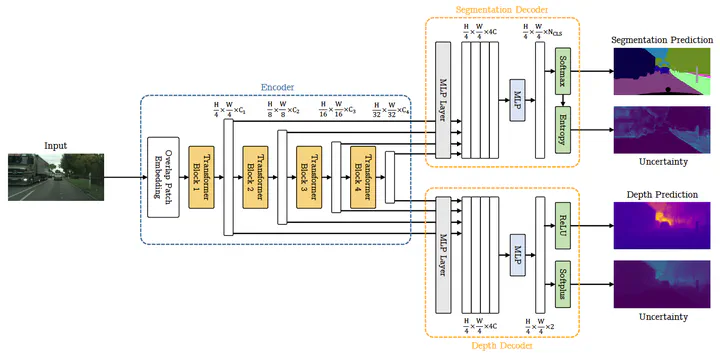A Comparative Study on Multi-task Uncertainty Quantification in Semantic Segmentation and Monocular Depth Estimation
Apr 15, 2025· ,,,·
0 min read
,,,·
0 min read
Dr. Steven Landgraf
Markus Hillemann
Theodor Kapler
Markus Ulrich
 Image credit: Dr. Steven Landgraf
Image credit: Dr. Steven LandgrafAbstract
Deep neural networks excel in perception tasks such as semantic segmentation and monocular depth estimation, making them indispensable in safety-critical applications like autonomous driving and industrial inspection. However, they often suffer from overconfidence and poor explainability, especially for out-of-domain data. While uncertainty quantification has emerged as a promising solution to these challenges, multi-task settings have yet to be explored. In an effort to shed light on this, we evaluate Monte Carlo Dropout, Deep Sub-Ensembles, and Deep Ensembles for joint semantic segmentation and monocular depth estimation. Thereby, we reveal that Deep Ensembles stand out as the preferred choice, particularly in out-of-domain scenarios, and show the potential benefit of multi-task learning with regard to the uncertainty quality in comparison to solving both tasks separately. Additionally, we highlight the impact of employing different uncertainty thresholds to classify pixels as certain or uncertain, with the median uncertainty emerging as a robust default.
Type
Publication
In De Gruyter Journal, tm - Technisches Messen